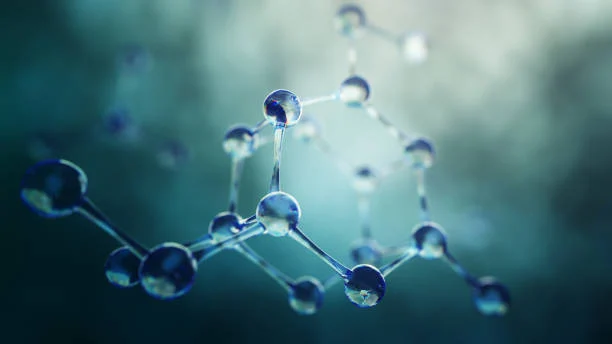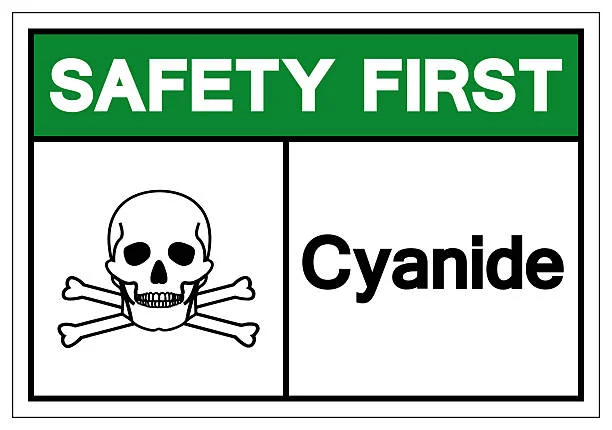
Introduction
Sodium cyanide (NaCN), an inorganic compound, despite its highly toxic nature, plays a significant role in various industrial and chemical processes. This article delves into its applications in pharmaceutical and Organic synthesis, highlighting its importance and the reactions it participates in.
Applications in Pharmaceutical Synthesis
Synthesis of Common Drugs
Penicillin
Cyanide compounds, including Sodium cyanide, are involved in the synthesis of some precursors for penicillin. In the complex multi - step synthesis of penicillin, certain reactions require the introduction of specific functional groups. Sodium cyanide can be used to introduce a cyanide group (-CN) in key intermediate compounds. This cyanide group can then be further transformed through hydrolysis, reduction, or other chemical reactions to form the desired molecular structures that are essential for the antibacterial activity of penicillin.
Vitamin B6
The synthesis of vitamin B6 also makes use of Sodium Cyanide in some synthetic routes. The cyanide group introduced by sodium cyanide can participate in ring - forming reactions and functional group transformations. For example, it can be used to build the pyridine ring structure that is characteristic of vitamin B6. Through a series of reactions such as nucleophilic addition and elimination reactions, the cyanide - containing intermediate can be gradually converted into the final vitamin B6 product with the correct stereochemistry and functional group arrangement.
Folic Acid
In the synthesis of folic acid, sodium cyanide may be used in the synthesis of its sub - units. Folic acid consists of a pteridine ring, para - aminobenzoic acid, and glutamic acid moieties. Sodium cyanide can be involved in reactions that form or modify the structures of these sub - units. For instance, in the synthesis of the pteridine ring, cyanide - based reactions can be used to introduce nitrogen - containing functional groups, which are crucial for the overall structure and biological activity of folic acid.
Caffeine
Caffeine synthesis can also involve sodium cyanide in certain synthetic strategies. The methylxanthine structure of caffeine can be constructed through a series of reactions starting from simpler precursors. Sodium cyanide can participate in reactions that introduce functional groups at specific positions on the ring structures, which are then methylated and further processed to form caffeine. The cyanide - derived functional groups can act as important building blocks for the construction of the complex caffeine molecule.
Synthesis of Pharmaceutical Intermediates
Amino Acids in Pharmaceuticals
Amino acids are fundamental building blocks for many pharmaceutical products. Sodium cyanide is used in the synthesis of certain amino acids. For example, in the Strecker synthesis, an aldehyde or ketone reacts with ammonia and sodium cyanide to form an α - amino nitrile. This α - amino nitrile can then be hydrolyzed to form the corresponding amino acid. This reaction provides a versatile method for the synthesis of non - natural and natural amino acids that are used in drug development, either as active pharmaceutical ingredients (APIs) themselves or as important intermediates for more complex drug molecules.
Intermediates for Anticancer Drugs
In the development of anticancer drugs, sodium cyanide can be used in the synthesis of specific intermediates. Some anticancer drugs have complex molecular structures that require the introduction of nitrile groups at precise positions. Sodium cyanide can be used to introduce these nitrile groups, which can then be further transformed into other functional groups such as amides, carboxylic acids, or amines through well - established chemical reactions. These functional groups are crucial for the drug's interaction with its target molecules in cancer cells, such as enzymes or receptors involved in cell growth and proliferation.
Applications in Organic Synthesis
Introduction of Cyanide Groups
Nitrile Synthesis
Sodium cyanide is a common reagent for the synthesis of nitriles. In organic chemistry, when an alkyl halide reacts with sodium cyanide in a polar aprotic solvent like dimethyl sulfoxide (DMSO) or dimethylformamide (DMF), the reaction follows a substitution nucleophilic bimolecular mechanism. As an example, ethyl bromide reacts with sodium cyanide in DMSO to form ethyl cyanide, also known as propionitrile. Nitriles are very versatile intermediates in organic synthesis. They can be converted into carboxylic acids through hydrolysis, reduced to form primary amines, or used in the synthesis of heterocyclic compounds.
Aromatic Nitrile Synthesis
Sodium cyanide can also be applied in the synthesis of aromatic nitriles. Reactions between aryl halides and sodium cyanide are more challenging compared to those with alkyl halides due to the lower reactivity of aryl halides. However, under certain conditions, such as using a copper catalyst in what is known as the Rosenmund - von Braun reaction, aryl nitriles can be produced. For instance, bromobenzene can react with sodium cyanide in the presence of copper(I) cyanide in DMF to form benzonitrile.
Synthesis of Complex Organic Molecules
Synthesis of Heterocyclic Compounds
Sodium cyanide often participates in the synthesis of heterocyclic compounds, which are widely found in natural products, drugs, and materials. In the synthesis of pyrimidines, a class of heterocyclic compounds with important biological activities, sodium cyanide can be involved in reactions that build the pyrimidine ring structure. One such process is when a 1,3 - dicarbonyl compound reacts with urea and sodium cyanide under basic conditions. The cyanide group gets incorporated into the reaction intermediate, and through a series of cyclization and elimination reactions, the pyrimidine ring is formed.
Synthesis of Natural Product - like Molecules
In the synthesis of complex molecules resembling natural products, sodium cyanide can be used in key steps to introduce functional groups or create carbon - carbon bonds. For example, in the total synthesis of some alkaloids, sodium cyanide may be employed to introduce a nitrile group at a specific position within the molecule. This nitrile group can then be used in reactions like Grignard - type reactions to create new carbon - carbon bonds or be further transformed into other functional groups, allowing for the step - by - step construction of the complex natural product structure.
Safety Considerations
It must be emphasized that sodium cyanide is extremely toxic. It can release cyanide ions in solution, which can bind to iron(III) in cytochrome c oxidase in cells, inhibiting cellular respiration and leading to rapid cell death. Therefore, in any application involving sodium cyanide, strict safety protocols must be followed. This includes handling in well - ventilated fume hoods, wearing appropriate personal protective equipment such as gloves, goggles, and protective clothing, and having proper emergency response plans in case of spills or exposure. Additionally, waste containing sodium cyanide must be treated properly to prevent environmental contamination.
Conclusion
Sodium cyanide, despite its high toxicity, is an important reagent in pharmaceutical and organic synthesis. It enables the synthesis of a wide range of drugs, pharmaceutical intermediates, and complex organic molecules. By understanding its applications and following strict safety procedures, chemists can continue to utilize sodium cyanide to develop new drugs, materials, and other valuable chemical products. However, efforts are also being made to develop alternative, less toxic methods for the reactions that currently rely on sodium cyanide to reduce the associated risks.
- Random Content
- Hot content
- Hot review content
- Featured Poducts Sodium Cyanide
- Barium carbonate 99% powder
- Hydrogen Peroxide
- Gold Ore Dressing Agent Safe Gold Extracting Agent Replace Sodium Cyanide
- Pharmaceutical Intermediate Glycine with High Quality 99%
- 99.9% Purity Ethyl Acetate
- Food Additive E330 Citric acid monohydrate
- 1Discounted Sodium Cyanide (CAS: 143-33-9) for Mining - High Quality & Competitive Pricing
- 2China's New Regulations on Sodium Cyanide Exports and Guidance for International Buyers
- 3Sodium Cyanide 98% CAS 143-33-9 gold dressing agent Essential for Mining and Chemical Industries
- 4International Cyanide(Sodium cyanide) Management Code - Gold Mine Acceptance Standards
- 5China factory Sulfuric Acid 98%
- 6Anhydrous Oxalic acid 99.6% Industrial Grade
- 7Oxalic acid for mining 99.6%
- 1Sodium Cyanide 98% CAS 143-33-9 gold dressing agent Essential for Mining and Chemical Industries
- 2High Quality 99% Purity of Cyanuric chloride ISO 9001:2005 REACH Verified Producer
- 3Zinc chloride ZnCl2 for High Molecular Weight Polymers Initiator
- 4High Purity · Stable Performance · Higher Recovery — sodium cyanide for modern gold leaching
- 5High Quality Sodium Ferrocyanide / Sodium Hexacyanoferr
- 6Gold Ore Dressing Agent Safe Gold Extracting Agent Replace Sodium Cyanide
- 7Sodium Cyanide 98%+ CAS 143-33-9











Online message consultation
Add comment: